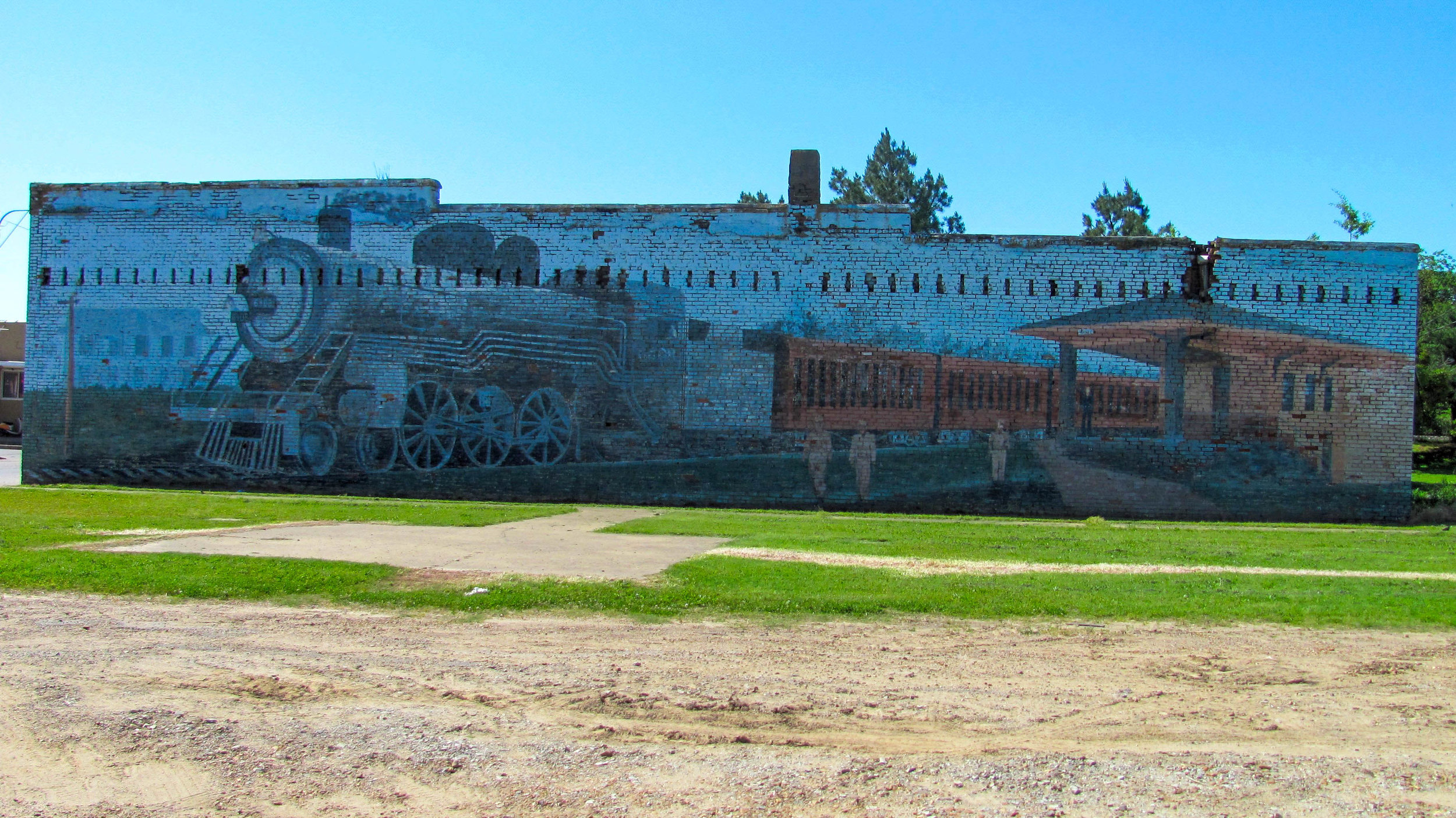Visitors Guide to Attractions
in Crittenden County, Arkansas
Crittenden County is situated on the opposite bank of the Mississippi River from Memphis, Tennessee. The area’s highlights include Wapanocca National Wildlife Refuge where visitors can participate in a wide variety of natural activities. The small community of Earle is home to the Crittenden County Museum and several historic sites. The little community of Turrell had a unique city hall - a World War 2 Quonset hut!
Arkansas Delta Music Trail Marker
West Memphis, AR
This Delta Music Marker marks the location of the legendary Plantation Inn. The Plantation Inn opened in 1943 in downtown West Memphis as a restaurant and nightclub and quickly became one of the hottest after-hours clubs in the Mid-South. All that remains is an Interpretive marker in the parking lot of a local restaurant.
Gibson Bayou Church and Cemetery
Earle, Arkansas
Gibson Bayou Cemetery is one of the oldest cemeteries in Crittenden County having been established in 1865. The cemetery surrounds the Gibson Bayou Church, a small white frame church, which was originally located on the north bank of Gibson Bayou. The cemetery is still being used and has been kept in good condition by the efforts of relatives of people buried here. The Gibson Bayou Cemetery has been named as a Historical Landmark.
Old Turrell City Hall
Turrell, Arkansas
The Old Turrell City Hall is one of the more unusual city halls I the country that are on the National Register of Historic Places. The structure is a Quonset hut built circa 1955 when this type of building was considered progressive and innovative. Its use as a city hall ended in 1968 and is now used as a city maintenance facility.
Wapanocca National Wildlife Refuge
Turrell, Arkansas
Wapanocca NWR is located 20 miles northwest of Memphis and was established in 1961 to provided habitat for migrating and wintering waterfowl. The 5,484 acre refuge is located four miles west of the Mississippi River and protected from the river by a river levee. Today the refuge is a wildlife oasis in an agricultural region. An excellent diversity of habitat exists on mainly agricultural land, bottomland hardwood forest, early stage reforested hardwoods, open water and flooded cypress/willow swamp. Because of its strategic location in the heart of the Mississippi Flyway and the diverse habitat, the refuge is a major stopover for warblers and other neo-tropical birds. The refuge is also a prime wintering area for migratory waterfowl.
Earle Mural
Commerce & 2nd Streets
Earle, Arkansas
This mural depicts the steam era during war time as soldiers disembark a train.
Tilden Rodgers Park
College Blvd.
West Memphis, Arkansas
Tilden Rodgers Park is an all purpose urban park that offers baseball fields, basketball court, golf course, soccer fields, tennis courts, skating, fishing, biking, running trails, picnic area, playgrounds, and boat rentals and boat ramps to access the lake.
Crittenden County Museum
1112 Main Street
Earle, Arkansas
870-792-7374
Nearby Attractions
Bootheel Missouri
The Missouri Bootheel is the southeastern most part of the state and is composed of the counties of Dunklin, New Madrid, and Pemiscot. Explore what the region once was like at the area’s many conservation areas. Learn the history of New Madrid, the great earthquakes of 1812-13, the role the town played in the Civil War, and the town’s history at several museums and historic sites in the town. Get a great view of the Mississippi from New Madrid’s riverfront. Other regional history can be found in museums in the towns of Kennett and Malden.
Crowley's Ridge Parkway in Northeast Arkansas
The counties of Clay, Greene, Craighead, Pointsett, and Cross comprise the upper two thirds of the Crowley's Ridge Parkway National Scenic Byway. Crowley's Ridge rises as much as 200 feet above the vast flatland of the Mississippi River Delta and is characterized by upland hardwood forests, farmland, orchards and a variety of recreational and historical resources. Four state parks lie along the parkway which passes through the St. Francis National Forest. Cultural attractions can be found in Jonesboro, home of Arkansas State University. Many of the regions communities are host to small museums that interprets the area’s history.
Western Tennessee
The Western Tennessee counties of Lake, Obion, Dyer, Lauderdale, and Tipton offers it visitors a variety of historical, natural, and cultural activities. History can be found everywhere in Western Tennessee at such places as Fort Pillow State Historic Park, the Alex Haley Home and Interpretive Center, and many county museums. Nature can be explored at Reelfoot Lake, Tennessee’s largest natural lake, and at Fort Pillow State Historic Park as well as the Tipton County Museum, Veterans Memorial & Nature Center. Unique architecture can be seen at the Tipton and Lauderdale County courthouses and their surrounding downtown districts and Confederate soldier monuments dot the landscape. Theater lovers will delight in the atmosphere of the Ruffin Theater in Covington.
For Travelers Heading Up the River
The Mississippi Meets the Ohio River Region
After the Mississippi River passes St. Louis it begins to change character. When the Mississippi River meets the Ohio River at Cairo, Illinois it is halfway on its journey to the sea. It is here that the brown muddy water of the Mississippi begins to mingle with the clearer water of the Ohio. Without the locks and dams the Mississippi begins to wind and curve so much so that the distance by water from Cape Girardeau to the Gulf of Mexico is twice the distance as a crow flies. The region where the Mississippi River meets the Ohio River is an area of transition in several respects both in terms of the flora and fauna but the culture begins to take on that of the Deep South. The Meeting the Ohio region of the Middle Mississippi River Valley offers it visitors a wide variety of options of activities to do and sites to see. Whether you’re looking for historical or cultural sites or a place to enjoy nature you’ll find it in this part of the country.






















